‘Its Out of Africa meets Pretty Woman … Ghost meets Manchurian Candidate’. These are the film pitch meetings in Robert Altman’s Hollywood satire The Player (1992). Potential new films, Altman suggests, can only exist in relation to old ideas. When all art must be recycled, that which is truly original and does not have a traceable heritage is too alarming for studios, critics, and audiences. A variant of this type of categorising is comparing current directors to past masters. The template seems to be as follows: a contemporary young(ish) director called George Crosthwait makes a film displaying some stylistic similarity to an Ed Wood film. The director will immediately cease being referred to as “George Crosthwait”, and is henceforth known as “George Crosthwait, the new Ed Wood”. “The new” tag will only refer to a deceased director of considerable fame and critical approval. This director and their “new” incarnations must make films in the same language. Thus for the English speaking west the most commonly evoked figure is Stanley Kubrick. “Is Christopher Nolan the new Stanley Kubrick” asks a Guardian article. A truly terrible article in The Yale Daily News titled “Finding Kubrick’s Heir” suggests that ‘Since the iconic director’s death in 1999, a bevy of today’s filmmakers have (either consciously or unconsciously) vied for the title of Kubrick’s successor”. For some spurious reason or another, the winner of this contest is David Fincher.
The same forced apprenticeships can be seen in Italian cinema: “Is Paolo Sorrentino like Fellini? Even Better.” (The New Republic). And Russian cinema: The Independent called Alexaner Sokurov ‘Tarkovsky’s disciple’. In Japan “the new” could conceivably be Akira Kurosawa or Kenji Mizoguchi. However no single working director lives as much in the shadow of an antecedent as Hirokazu Kore-eda with Yasujiro Ozu.
In his review of Maborosi (1997) Roger Ebert describes Kore-eda as ‘ a young Japanese director whose love for the work of the great Yasujiro Ozu (1903-63) is evident’. A review of Nobody Knows (2004) in The Washington Post by Ann Hornaday describes ‘a style reminiscent of the great Japanese director Yasujiro Ozu’. Peter Bradshaw calls Still Walking (2008) ‘a homage to Ozu’s Tokyo Story. It is as if Kore-eda is the wayward elder son making a bow to the great patriarch’. Another Bradshaw review, this time for I Wish (2011): ‘a deeply considered Japanese family drama in the tradition of Ozu’. Robbie Collin concludes his review of Like Father, Like Son (2013) with the line: ‘his status as Ozu’s heir becomes ever more assured’.
What it means to be Ozu
Critics will confidently make comparisons to a director such as Ozu, because they have such an easily classified style. It seems that an invocation of Ozu generally refers to the latter stages of his career. A period that starts with Late Spring in 1949 and ends with An Autumn Afternoon in 1962. Ozu died the following year on his 60th birthday. These 13 films are all domestic dramas centring on middle class households. Themes of ageing, death, marriage, generational conflict, and westernisation, occur in some form. All these films were co-written with Kogo Noda, and starred ensemble casts frequently including Chishu Ryu, Setsuko Hara, Haruko Sugimura, and many others.
Dramatic tension is rare, and Ozu uses narrative ellipses to avoid climatic moments. In Late Spring, for example, the audience is treated to an extended Noh theatre performance. Noriko’s wedding, however, which the film has been building up to, is skipped completely.
Ozu’s camera rarely moves, and when it does it is barely perceptible. In Late Spring he pans to follow Noriko and Hattori as they cycle to a beach. He keeps Noriko in the dead centre of the shot at all times, effectively removing any sense of movement from the scene. When filming in a domestic setting the camera is lowered to three feet off the floor, in order to match the eye level of the actors sitting on tatami mats. Ozu uses a direct address when filming actors in close-up. They will always look and speak at the camera, regardless of the logical positioning of sight lines.
Ozu uses minimal sets and locations in his films. There will be a household set, an office set, and a bar/restaurant set. The focus of an Ozu home set is always a table. The decor is combination of squares and rectangles reminiscent of Mondrian.
Ozu’s office spaces are drab and empty, as opposed to his bar scenes which, although uncluttered, are more intimate. A bar scene is usually preceded by one of Ozu’s rare establishing shots. This will be a street or an alley with many bar signs (made by the director himself).
Exterior scenes are rare and fall into two categories. Some are used repeatedly as they are places of social interaction: a grassy bank along which the children walk to school in Good Morning (1959), the rooftop where office workers take their break in Late Autumn (1960). Shots of scenic beauty occur occasionally: a hiking outing in Late Autumn, and a trip to a lake in Equinox Flower (1958). These scenes offer the audience a feeling of expansive freedom when they are unexpectedly released from the cramped confines of urban rooms.
Visual tropes of trains, food and teapots run through all these films. Ozu’s most famous visual signature is perhaps the “pillow shot”. Used as a bridging device between scenes, the pillow shot is a 5-10 second static shot of an object, building, or scenery.
This pillow shot from The Floating Weeds (1959) inspired several responses. Geoff Andrew sees it as a phallic symbol, whilst Gilles Deleuze writes: ‘the marvellous composition with the bottle and the lighthouse, at the beginning of A Story of Floating Weeds. The distinction is none the less that of the empty and the full, which brings into play all the nuances or relations in Chinese and Japanese thought, as two aspects of contemplation’ (why Ozu represents Chinese thought eludes me).
Rescuing Kore-eda
How does Kore-eda fit into this strict aesthetic? I will now look at six of Kore-eda’s most popular films to decide whether the “new Ozu” tag is accurate, and indeed constructive.
Maborsi (1995)
Kore-eda’s debut feature concerns a young widow named Yumiko who moves to an idyllic coastal village with her young son in order to live in an arranged marriage with a widower.
The new Ozu? Maborosi is a quiet drama containing no narrative histrionics. Kore-eda uses ellipses: a jump of four years at one point. Journeys are sometimes skipped over like in Tokyo Story (1953). Kore-eda’s camera moves only two or three times. A train motif is used throughout the film along with another favourite symbol of Ozu’s: a bike. Yumiko’s neighbourhood bar is cramped and under-patronised like an Ozu bar. There is a an exterior shot of Yumiko’s street which includes a train bridge. This scene is used repeatedly as she and her first husband leave and return to their Osaka apartment. This small dwelling contains similar geometric imagery to Ozu’s households.
Not Ozu? Although Kore-eda’s camera is mainly still, the visual identity of the film is very different to Ozu. Kore-eda uses only natural light meaning many interior scenes take place in near darkness. Ozu’s interiors were always brightly lit, he wasn’t known for shadow play. Kore-eda uses no close-ups and faces are obscure. He often uses two-shots for Yumiko and her husband(s) which negates the possibility of direct address. He shoots expansive scenes in static long shots. The subjects moving across vast landscapes which means that although the camera is still, there is usually a sense of movement within the frame. The train imagery may have seemed a direct nod to Ozu back in 1995. However, reflecting on Kore-eda’s career after 20 years it is safe to say that his obsession with trains runs deeper that even Ozu. The overall mood of the film is far dreamier than Ozu. There are two dream sequences (or flashbacks) and the final discussion of maborosi (will-o’-the-wisp lights seen at sea) is more akin to the end of Eric Rohmer’s The Green Ray (1986) than any Ozu film.
After Life (1998)
After Life tells the story of counsellors at a holding station for the recently deceased. The departed have one week to select a memory from their lives which they will take with them into the great beyond.
The new Ozu? After Life provokes the least Ozu comparisons from film critics. This is despite being the one Kore-eda film to have an indisputable link to Ozu: actress Kyōko Kagawa who played the youngest daughter in Tokyo Story. The direct address is used here, but it is not fully fledged. These scenes are interviews and thus the eye lines match.
The fantasy setting of the film allows for temporal collapse. A young counsellor at the holding house reveals that he died in WWII. One man in his care turns out to be the man his fiancée married after his death. This account of wartime loss is an inversion of Ozu’s treatment of the subject, where a narrative would focus on the widow.
Not Ozu? The high concept nature of After Life make Ozu comparisons a stretch. It is a highly reflexive film that connects memory formation to film making, film watching, and film archiving. Ozu isn’t especially reflexive (unless you count his actors staring at you down the camera lens).This film reminds me more of Michel Gondry’s Eternal Sunshine of the Spotless Mind (2004), or, in an odd way, Paul Verhoeven’s Total Recall (1990). Many of the interviews are based on real interviews. This would bracket the film with the fiction/documentary blurring work of Jia Zhangke, or Clio Barnard’s The Arbor (2010).
It is worth remembering that Ozu probably didn’t believe in any kind of afterlife. His grave marker is engraved with a single kanji meaning “nothingness”.
Nobody Knows (2004)
Nobody Knows is based an true account of child abandonment in Tokyo. In the film 12 year old Akira is left to look after his two younger sisters and younger brother when their mother leaves to start a new life without them.
The new Ozu? Nobody Knows is a harrowing experience that turns on a narrative pivot of the kind Ozu deliberately avoided. The interior camera work is close and cramped, but to an extreme that surpasses any overcrowded dinner table in Ozu. There is a train once again. More true to Ozu is the exterior shot of a steep set of steps near the children’s apartment. This is used extensively as a signifier for leaving and returning home.
Not Ozu? Again it’s a stretch to find Ozu in Nobody Knows. If this film resembles anything, then I think it works in tropes taken from Hiyao Miyazaki animations. These Studio Ghibli produced films often revolve around children cut-off from their parents and fending for themselves. My Neighbour Totoro (1988) is mentioned by name. Totoro is magical creature who becomes a guardian for two young girls whilst their mother is confined to a hospital. Akira does a similar job for his siblings. Spirited Away (2001) features a young girl forced to work when she loses her parents. Howl’s Moving Castle (2004) sees a girl turned into an old woman by a maternal figure (witch). Like that film a family is consigned to remain in a house whilst a solitary young male breadwinner, Howl/Akira, goes on excursions. The teenage girl, Kyōko, who befriends the family echoes Kiki in Kiki’s Delivery Service (1989) in her desire to work to support a surrogate family. As the children become more feral they represent the forest dwellers in Princess Mononoke (1997). An atmosphere of fantastic adventure stops Miyazaki’s films from becoming oppressively dark. This atmosphere prevails to an extent in Nobody Knows, until harsh reality kicks in. By the end the film has come to resemble another Studio Ghibli directer’s key work: Isao Takahata’s devastating Grave of the Fireflies (1988).
Still Walking (2008)
Still Walking depicts a family reunion to mark the anniversary of the eldest son’s death.
The new Ozu? Still Walking is generally seen as the most Ozu-like of all Kore-eda’s films. Viewed as a reverse Tokyo Story: the children are visiting the parents this time. This generational interplay was the key theme in Ozu. Ebert writes that ‘like Ozu, he pays meticulous attention to composition and camera placement’. Ebert also mentions the use of pillow shots and trains in Still Walking.
Not Ozu? I find these Ozu comparisons the most tiresome. Just because a Japanese film revolves around a family visit doesn’t automatically make it a homage to Tokyo Story! Tokyo Story is about an old couple visiting their children in Tokyo. They find themselves out of step with modernity, their children find them a tiresome nuisance. When attending a funeral in the country the children quickly make excuses to leave and return to their busy city lives. Still Walking is about a generation of children struggling to get by in the modern economic climate and job market. It is the children who are an embarrassment to their father (a retired doctor), who lived his whole life with financial security and professional respectability. Rather than fleeing the funeral of a recently deceased relative they are forced repeatedly to revisit the death of their sibling and thus have no sense of closure, or severing of ties to their home.
Ebert writes of camera work, but meticulous camera placement doesn’t make you Ozu. He isn’t the only director to have a specific shooting style. Here Kore-eda’s camera moves (gently) and often picks out close-ups of hands preparing food. This is not an Ozu trope. Kore-eda uses the pillow shot in a different way to Ozu. Ozu’s pillow shots were abstract from the narrative, and were used as an alternative to abrupt cuts. Kore-eda’s are usually connected to the narrative. The final image with the train which Ebert alludes to is not just a pillow shot, but one of the great closing scenes in modern cinema. The surviving son and his family have gone to pay their respects at the family grave markers on a scorching day. In an unbroken shot they walk away from the graveyard followed by the camera before it pans up into an extraordinary crane shot overlooking the town. The shot is almost a freeze-frame except for some cars in the distance. Suddenly a bullet train whistles across the screen for several seconds. It is a joyful scene for reasons that are hard to define. Paul Schrader described Ozu as a transcendental filmmaker. This is Kore-eda’s moment of transcendence.
I Wish (2011)
I Wish involves two separated brothers (one lives with dad in Fukuoka, the other with mum in Kagoshima). Along with some friends they plan to meet at the point where two bullet trains pass each other in order to “wish” for a family reconciliation.
The new Ozu? I Wish is compared to Ozu’s Good Morning. Both films revolve around preteen school children, and both films have many scenes where three school friends chat on to way to and from their school.
Not Ozu? I find this Ozu link quite tenuous also. The Kagoshima scenes have a similar three boy set up to Good Morning, but this ignores the Fukuoka set scenes, which include mainly young girls. Good Morning is a slight anomaly in Ozu’s latter filmography. It is lighter in tone (fart jokes!) to any film except Late Autumn, and is the only one of these late films to be interested in young children. Conversely, young characters and excellent child actor performances have become a staple of Kore-eda. This is more Kore-eda territory than it is Ozu. Good Morning is about consumerism. A woman is outcast from society when expected of stealing money to buy a new dishwasher, and the kids go on hunger strike because they don’t have a TV to watch sumo wrestling on. The film ends with them forgetting their strike when their dad brings home a new television. In I Wish the kids sell their toys to buy train tickets so the brothers can meet.
Also, Ozu would never use an erupting volcano as a visual metaphor when a red teapot will suffice…
Like Father, Like Son (2013)
A hard-working executive discovers that his six year old son was switched at birth by a hospital nurse.
The New Ozu? No.
Not Ozu? With an even more dramatic narrative twist than Nobody Knows, Like Father, Like Son (Hollywood is also fond of the “changeling” narrative) is almost devoid of Ozu’s influence. The film’s primary themes are fatherhood and class conflict. Ozu had little to say on relationships between young sons and their fathers (he never married nor had children), and even less to say on class conflict. The story of a wealthy couple (in particular the husband) assuming power over a working class couple shares more with Asghar Farhadi’s A Seperation (2011). In both films a husband tries to force those less powerful than him (unsuccessfully) to do his bidding. In both cases this man’s wife sympathises with the poorer couple. I think the opening scenes of both films share similarities.
The new … Kore-eda?
I hope I’ve shown that constant comparisons to Ozu (or any past great) are overused, reductive, and frankly quite lazy. I think its fine (but not essential) to mention very deliberate homages or stylistic choices. To shoe horn a reference to Ozu into every review of a Kore-eda film is in fact a bit insulting. Instead, if you admire a director, focus on their particular style. Let’s talk more about the direction of the child actors, the beautiful shots of trains, and railway tracks, a camera/lighting/sound design that alters depending on the needs of the film, a subtle anti-capitalism critique. Don’t force filmmakers to live in their fathers’ shadows.


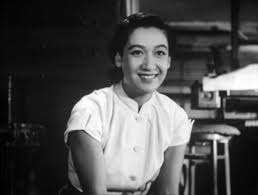
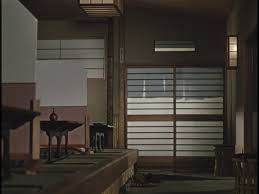
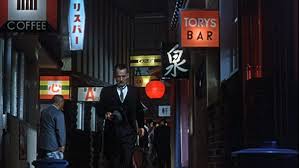
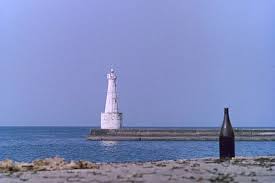
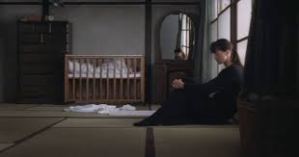
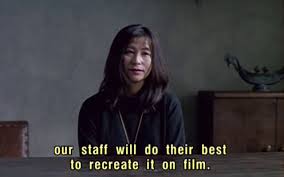
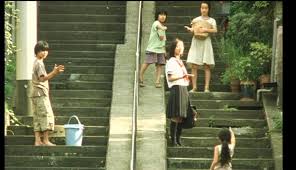
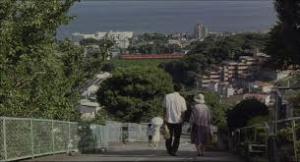
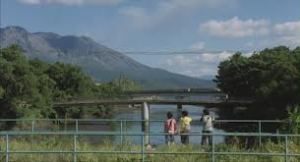
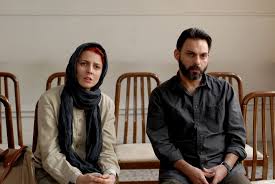
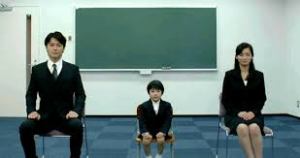
You obviously haven’t seen I WAS BORN, BUT… which most closely resembles both I WISH and LIKE FATHER, LIKE SON. A lot of scholars would call GOOD MORNING its remake, but that’s hardly the case. Very different films.
The ghost of a dead son haunts both TOKYO STORY and STILL WALKING. I don’t think the comparison is tenuous at all. In fact, I think it’s pretty obvious that the director is responding to Ozu’s work, just giving his twist on him. I don’t see it as a detriment either – there’s so many American directors tirelessly trying to be Stanley Kubrick, Martin Scorsese, Orson Welles, and even Quentin Tarantino that it’s all getting quickly tiring. It’s like no one is film literate beyond several overly masculine directors that deal with the same prototypical story of male identity over and over and over.
LikeLike
I’ve seen none of Ozu’s silent output. I would like to see “I was Born”. I find “Good Morning” a bit problematic; everything is solved by buying a new television!
It’s hard to argue against the presence of “Tokyo Story” in “Still Walking”. Both are great films that do complement each other in the ways you suggest. I would say that there is plenty in “Still Walking” that is unique to Kore-eda’s style. It is probably healthier to look at influences of particular films rather than a director’s complete oeuvre.
It would be more productive for American directors to draw some influence from outside their immediate tradition: “Tokyo Story” rather than “Goodfellas” for instance. Both Claire Denis (35 Shots of Rum) and Joanna Hogg (Archipelago) have made great Ozu inflected films.
LikeLike